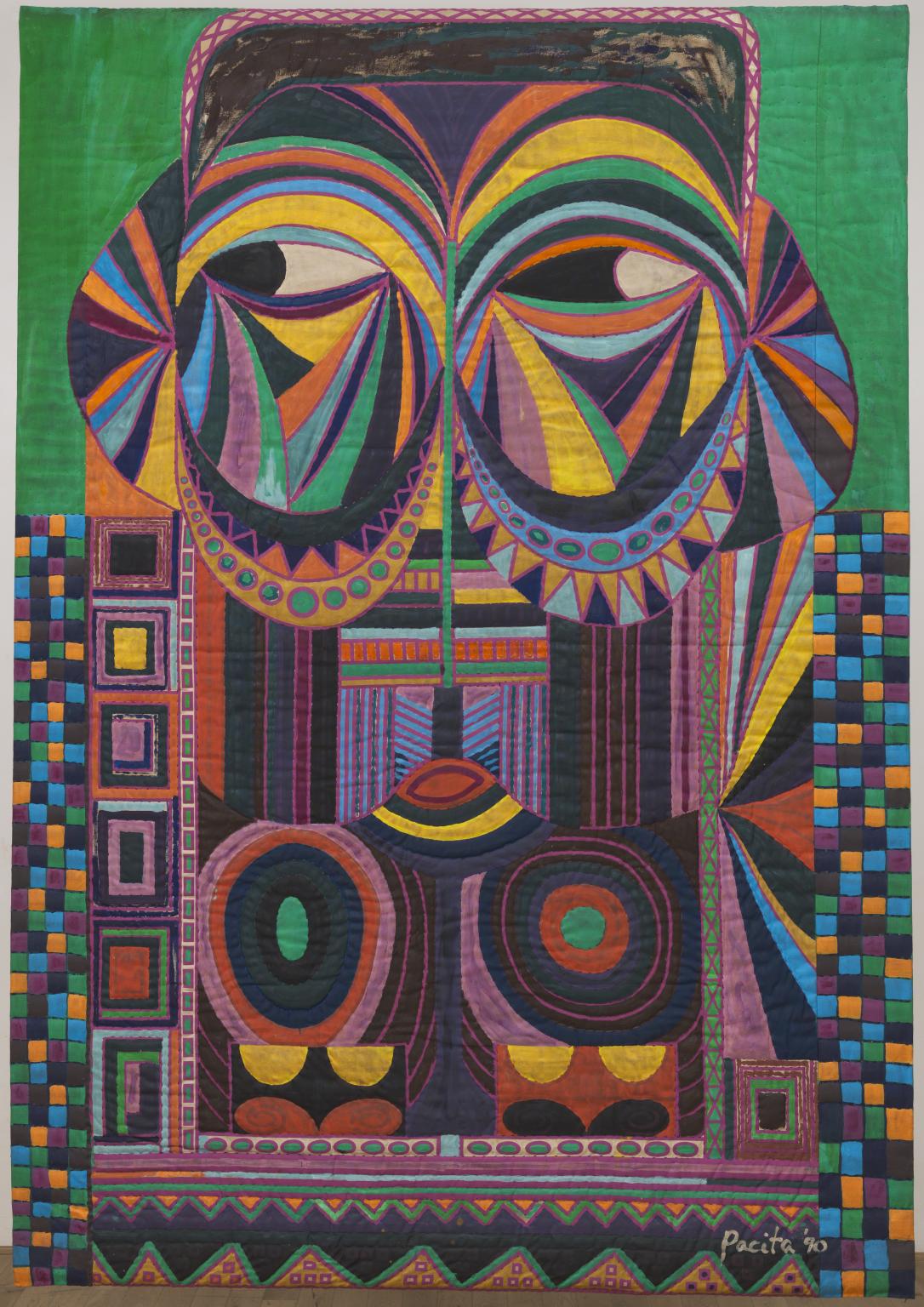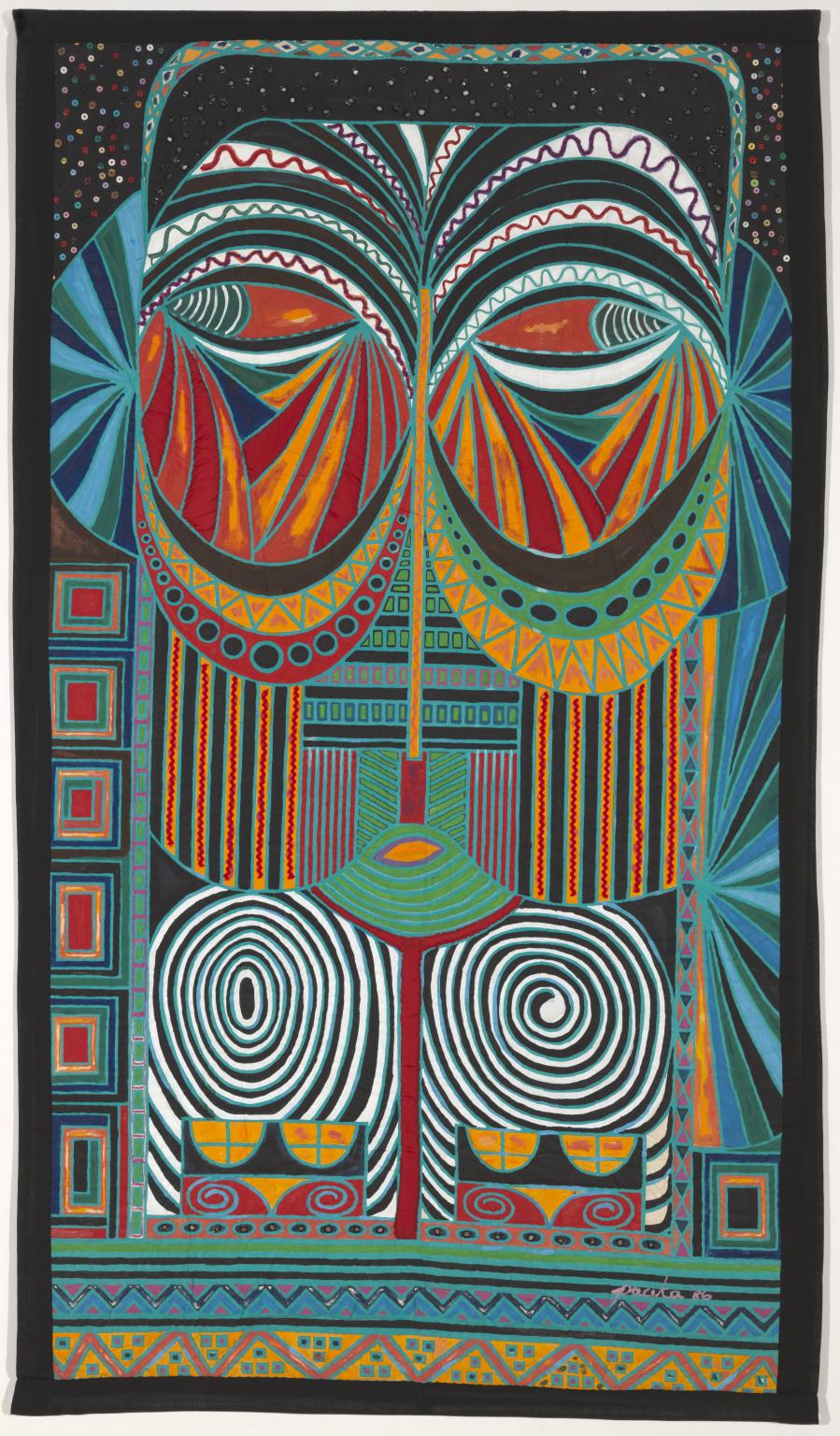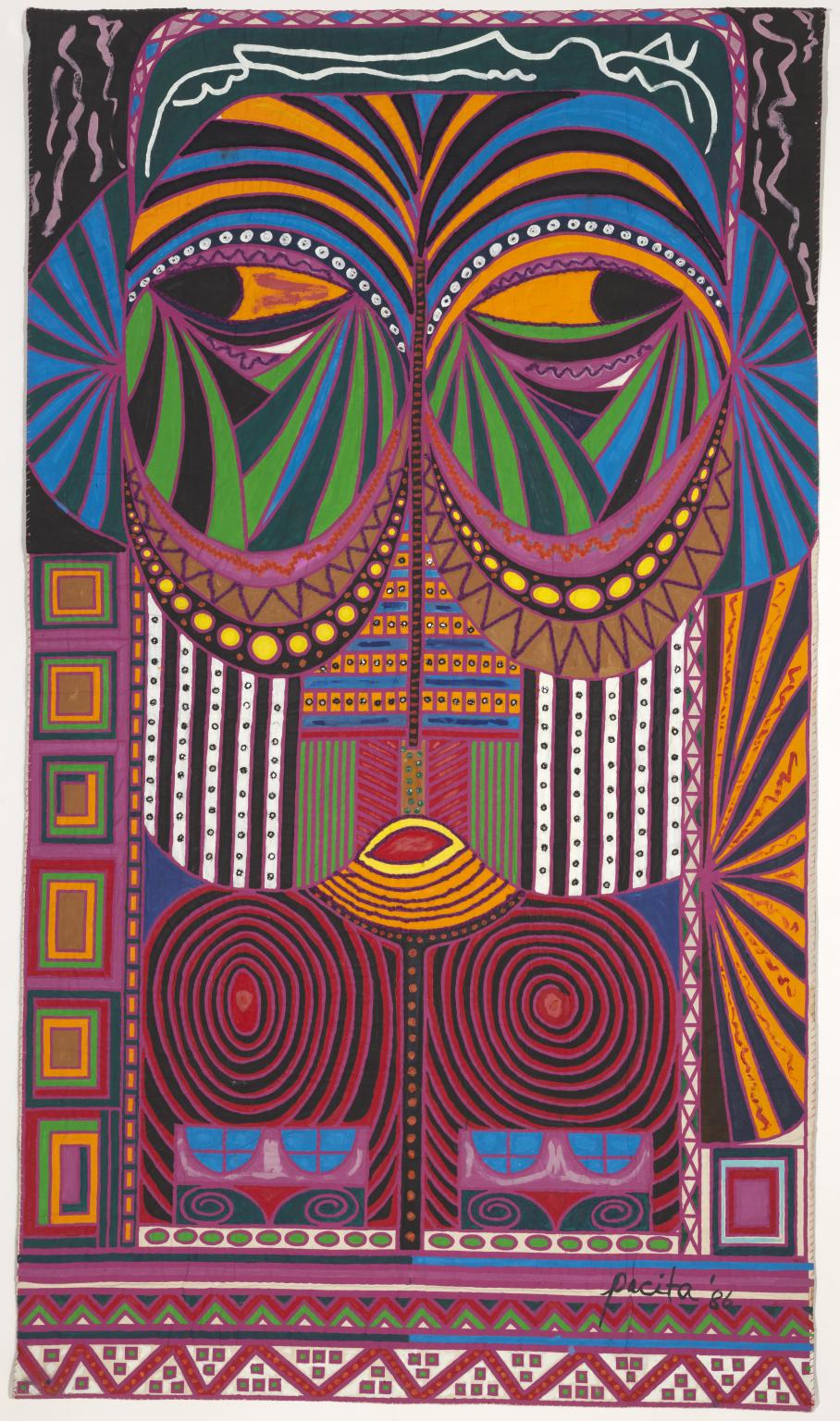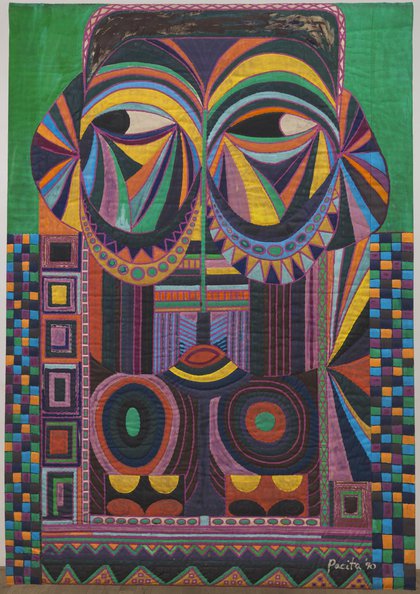10 rooms in Artist and Society
These quilted canvases celebrate global artistic traditions and Indigenous cultures through their bold colours and sculpted surfaces
Pacita Abad’s vibrant paintings and textile works combine many traditional art forms. These include Indonesian batik (cloth-dying using wax), Korean ink-brush painting, macramé (knotted textiles) from Papua New Guinea, and sewing techniques from the Philippines. Born to a political family in the Philippines, Abad studied law before turning to art after she moved to the United States. She later travelled across Asia, Africa and Latin America, where the social realities and creativity she saw inspired her work. Abad said, ‘My paintings tell the stories of people ... that I have met and talked to along my way.’
Abad transformed her paintings into three-dimensional, free-hanging canvases, which she called trapuntos, the Italian word for quilted embroidery. She stitched and stuffed the textiles, adorning them with objects she found on her travels, such as shells, beads and mirrors. Her layered compositions speak to her experiences of migration and encounters across cultures. As the artist once observed, ‘I truly believe that, as an artist, I have a social responsibility for my painting, to try to make our world a little better.’
Art in this room




